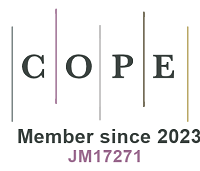REFERENCES
1. Ren X, Chen C, Nagatsu M, Wang X. Carbon nanotubes as adsorbents in environmental pollution management: a review. Chem Eng J 2011;170:395-410.
2. Chung JY, Yu SD, Hong YS. Environmental source of arsenic exposure. J Prev Med Public Health 2014;47:253-7.
3. Ravenscroft P, Brammer H, Richards K. Arsenic pollution: a global synthesis. Oxford, UK: Wiley-Blackwell, 2009.
4. Smedley P, Kinniburgh D. A review of the source, behaviour and distribution of arsenic in natural waters. Appl Geochem 2002;17:517-68.
5. Chutia P, Kato S, Kojima T, Satokawa S. Arsenic adsorption from aqueous solution on synthetic zeolites. J Hazard Mater 2009;162:440-7.
6. Song W, Zhang M, Liang J, Han G. Removal of As(V) from wastewater by chemically modified biomass. J Mol Liq 2015;206:262-7.
7. Sigdel A, Park J, Kwak H, Park P. Arsenic removal from aqueous solutions by adsorption onto hydrous iron oxide-impregnated alginate beads. J Ind Eng Chem 2016;35:277-86.
8. Sun J, Zhang X, Zhang A, Liao C. Preparation of Fe-Co based MOF-74 and its effective adsorption of arsenic from aqueous solution. J Environ Sci 2019;80:197-207.
9. Wang C, Luan J, Wu C. Metal-organic frameworks for aquatic arsenic removal. Water Res 2019;158:370-82.
10. Holm TR. Effects of CO32-/bicarbonate, Si, and PO43- on Arsenic sorption to HFO. J AWWA 2002;94:174-81.
11. Bissen M, Frimmel FH. Arsenic - a review. Part II: oxidation of Arsenic and its removal in water treatment. Acta hydrochim hydrobiol 2003;31:97-107.
12. Choong TS, Chuah T, Robiah Y, Gregory Koay F, Azni I. Arsenic toxicity, health hazards and removal techniques from water: an overview. Desalination 2007;217:139-66.
13. Norberto J, Zoroufchi Benis K, Mcphedran KN, Soltan J. Microwave activated and iron engineered biochar for arsenic adsorption: life cycle assessment and cost analysis. J Environ Chem Eng 2023;11:109904.
14. Masue Y, Loeppert RH, Kramer TA. Arsenate and arsenite adsorption and desorption behavior on coprecipitated aluminum:iron hydroxides. Environ Sci Technol 2007;41:837-42.
15. Mohan D, Pittman CU Jr. Arsenic removal from water/wastewater using adsorbents - a critical review. J Hazard Mater 2007;142:1-53.
16. Lee B, Kim Y, Lee H, Yi J. Synthesis of functionalized porous silicas via templating method as heavy metal ion adsorbents: the introduction of surface hydrophilicity onto the surface of adsorbents. Micropor Mesopor Mat 2001;50:77-90.
17. Ahmaruzzaman M. Industrial wastes as low-cost potential adsorbents for the treatment of wastewater laden with heavy metals. Adv Colloid Interface Sci 2011;166:36-59.
18. Zhang L, Zeng Y, Cheng Z. Removal of heavy metal ions using chitosan and modified chitosan: a review. J Mol Liq 2016;214:175-91.
19. Tizhe B, Osemeahon S, Nkafamiya I, Shagal M. Biosorption of metal ions from aqueous solution by immobilized moringa oleifera bark. IRJPAC 2015;5:238-44.
20. Barua S, Rahman IMM, Nazimuddin M, Hasegawa H. Evaluation of Moringa oleifera carbon for the As(III) removal from contaminated groundwater. Int J Innov Appl Stud 2014;8:1390-9. Available from: https://www.cabidigitallibrary.org/doi/full/10.5555/20153089415. [Last accessed on 7 Dec 2024]
21. Mirza NH, Fujino T. Gypsum-based porous media filter with solid waste: a novel composite for removing arsenic (III) from aqueous solution. Int J Eng 2025;38:735-43.
22. Ouyang D, Zhuo Y, Hu L, Zeng Q, Hu Y, He Z. Research on the adsorption behavior of heavy metal ions by porous material prepared with silicate tailings. Minerals 2019;9:291.
23. Mazloom G, Farhadi F, Khorasheh F. Kinetic modeling of pyrolysis of scrap tires. J Anal Appl Pyrol 2009;84:157-64.
24. Khraibet SA, Mazloom G, Banisharif F. Comparative study of different two-phase models for the propane oxidative dehydrogenation in a bubbling fluidized bed containing the VOx/γ-Al2O3 catalyst. Ind Eng Chem Res 2021;60:9729-38.
25. Jaffari ZH, Abbas A, Kim CM, et al. Transformer-based deep learning models for adsorption capacity prediction of heavy metal ions toward biochar-based adsorbents. J Hazard Mater 2024;462:132773.
26. Yaseen ZM. An insight into machine learning models era in simulating soil, water bodies and adsorption heavy metals: Review, challenges and solutions. Chemosphere 2021;277:130126.
27. Xiong T, Cui J, Hou Z, et al. Prediction of arsenic adsorption onto metal organic frameworks and adsorption mechanisms interpretation by machine learning. J Environ Manage 2023;347:119065.
28. Liu R, Zuo L, Zhang P, Zhao J, Tao D. A deep learning neural network approach for predicting the factors influencing heavy-metal adsorption by clay minerals. Clay Miner 2022;57:70-6.
29. Shaheen SM, Niazi NK, Hassan NE, et al. Wood-based biochar for the removal of potentially toxic elements in water and wastewater: a critical review. Int Mater Rev 2019;64:216-47.
30. Mongioví C, Crini G, Gabrion X, et al. Revealing the adsorption mechanism of copper on hemp-based materials through EDX, nano-CT, XPS, FTIR, Raman, and XANES characterization techniques. Chem Eng J Adv 2022;10:100282.
31. Mallik AK, Moktadir MA, Rahman MA, Shahruzzaman M, Rahman MM. Progress in surface-modified silicas for Cr(VI) adsorption: a review. J Hazard Mater 2022;423:127041.
32. Ismail UM, Onaizi SA, Vohra MS. Aqueous Pb(II) removal using ZIF-60: adsorption studies, response surface methodology and machine learning predictions. Nanomaterials 2023;13:1402.
33. Abdi J, Mazloom G. Machine learning approaches for predicting arsenic adsorption from water using porous metal-organic frameworks. Sci Rep 2022;12:16458.
34. Aftab RA, Zaidi S, Danish M, Ansari KB, Danish M. Novel machine learning (ML) models for predicting the performance of multi-metal binding green adsorbent for the removal of Cd (II), Cu (II), Pb (II) and Zn (II) ions. Environ Adv 2022;9:100256.
35. Zhu X, Wan Z, Tsang DC, et al. Machine learning for the selection of carbon-based materials for tetracycline and sulfamethoxazole adsorption. Chem Eng J 2021;406:126782.
36. Yin G, Jameel Ibrahim Alazzawi F, Mironov S, et al. Machine learning method for simulation of adsorption separation: comparisons of model’s performance in predicting equilibrium concentrations. Arab J Chem 2022;15:103612.
37. Dashti A, Raji M, Riasat Harami H, Zhou JL, Asghari M. Biochar performance evaluation for heavy metals removal from industrial wastewater based on machine learning: application for environmental protection. Sep Purif Technol 2023;312:123399.
38. Almalawi A, Khan AI, Alqurashi F, Abushark YB, Alam MM, Qaiyum S. Modeling of remora optimization with deep learning enabled heavy metal sorption efficiency prediction onto biochar. Chemosphere 2022;303:135065.
39. Elbana TA, Magdi Selim H, Akrami N, Newman A, Shaheen SM, Rinklebe J. Freundlich sorption parameters for cadmium, copper, nickel, lead, and zinc for different soils: influence of kinetics. Geoderma 2018;324:80-8.
40. Ducamp M, Coudert F. Prediction of thermal properties of zeolites through machine learning. J Phys Chem C 2022;126:1651-60.
41. Ma S, Liu Z. Machine learning for atomic simulation and activity prediction in heterogeneous catalysis: current status and future. ACS Catal 2020;10:13213-26.
42. Mandal S, Mahapatra S, Sahu M, Patel R. Artificial neural network modelling of As(III) removal from water by novel hybrid material. Process Saf Environ 2015;93:249-64.
43. Sakizadeh M. Artificial intelligence for the prediction of water quality index in groundwater systems. Model Earth Syst Environ 2016;2:63.
44. Guo Y, Bartlett PL, Shawe-Taylor J, Williamson RC. Covering numbers for support vector machines. IEEE Trans Inform Theory 2002;48:239-50.
45. Durbha SS, King RL, Younan NH. Support vector machines regression for retrieval of leaf area index from multiangle imaging spectroradiometer. Remote Sens Environ 2007;107:348-61.
46. Čeh M, Kilibarda M, Lisec A, Bajat B. Estimating the performance of random forest versus multiple regression for predicting prices of the apartments. IJGI 2018;7:168.
47. Wei L, Yuan Z, Zhong Y, Yang L, Hu X, Zhang Y. An improved gradient boosting regression tree estimation model for soil heavy metal (arsenic) pollution monitoring using hyperspectral remote sensing. Appl Sci 2019;9:1943.
48. Cha Y, Kim YM, Choi JW, Sthiannopkao S, Cho KH. Bayesian modeling approach for characterizing groundwater arsenic contamination in the Mekong River basin. Chemosphere 2016;143:50-6.
49. Jang JSR. ANFIS: adaptive-network-based fuzzy inference system. IEEE Trans Syst Man Cybern 1993;23:665-85.
50. Abdullahi J, Rufai I, Rimtip NN, Orhon D, Aslanova F, Elkiran G. A novel approach for precipitation modeling using artificial intelligence-based ensemble models. Desalin Water Treat 2024;317:100188.
51. Mirza NH, Fujino T. Aqueous arsenic (III) removal using a novel solid waste based porous filter media block: traditional and machine learning (ML) approaches. Desalin Water Treat 2024;319:100536.
52. Zhu JJ, Yang M, Ren ZJ. Machine learning in environmental research: common pitfalls and best practices. Environ Sci Technol 2023;57:17671-89.
53. Zhao S, Li J, Chen C, Yan B, Tao J, Chen G. Interpretable machine learning for predicting and evaluating hydrogen production via supercritical water gasification of biomass. J Clean Prod 2021;316:128244.
54. Li J, Li L, Tong YW, Wang X. Understanding and optimizing the gasification of biomass waste with machine learning. Green Chem Eng 2023;4:123-33.
55. Alemneh ST, Emire SA, Hitzmann B, Zettel V. Comparative study of chemical composition, pasting, thermal and functional properties of Teff (Eragrostis tef) flours grown in Ethiopia and South Africa. Int J Food Prop 2022;25:144-58.
56. Smith A, Keane A, Dumesic JA, Huber GW, Zavala VM. A machine learning framework for the analysis and prediction of catalytic activity from experimental data. Appl Catal B Environ 2020;263:118257.
57. Li J, Zhang L, Li C, et al. Data-driven based in-depth interpretation and inverse design of anaerobic digestion for CH4-rich biogas production. ACS EST Eng 2022;2:642-52.
58. Jamei M, Karbasi M, Alawi OA, et al. Earth skin temperature long-term prediction using novel extended Kalman filter integrated with artificial intelligence models and information gain feature selection. Sustain Comput Infor 2022;35:100721.
60. Zhu X, Wang X, Ok YS. The application of machine learning methods for prediction of metal sorption onto biochars. J Hazard Mater 2019;378:120727.
61. Pathy A, Meher S, P B. Predicting algal biochar yield using eXtreme Gradient Boosting (XGB) algorithm of machine learning methods. Algal Res 2020;50:102006.
62. Kooh MRR, Thotagamuge R, Chou Chau Y, Mahadi AH, Lim CM. Machine learning approaches to predict adsorption capacity of Azolla pinnata in the removal of methylene blue. J Taiwan Inst Chem Eng 2022;132:104134.
63. Ghaedi M, Daneshfar A, Ahmadi A, Momeni M. Artificial neural network-genetic algorithm based optimization for the adsorption of phenol red (PR) onto gold and titanium dioxide nanoparticles loaded on activated carbon. J Ind Eng Chem 2015;21:587-98.
64. Zhang S, Yuan Y, Liu C, et al. Modeling and optimization of porous aerogel adsorbent for removal of cadmium from crab viscera homogenate using response surface method and artificial neural network. LWT 2021;150:111990.
65. Jiang H, Yang Z, Li Z. Non-parallel hyperplanes ordinal regression machine. Knowl Based Syst 2021;216:106593.
66. Emmert-Streib F, Dehmer M. Taxonomy of machine learning paradigms: a data-centric perspective. WIREs Data Min Knowl 2022;12:e1470.
67. Ye H, Ma X, Yang T, Hou Y. Comparative study on the performance prediction of fuel cell using support vector machine with different kernel functions. In: Proceedings of China SAE Congress 2018: Selected Papers; Singapore. 2020. pp. 337-51.
68. Lee SH, Li J, Wang X, Yang K. Online-learning-aided optimization and interpretation of sugar production from oil palm mesocarp fibers with analytics for industrial applications. Resour Conserv Recy 2022;180:106206.
69. Zhang L, Chao B, Zhang X. Modeling and optimization of microbial lipid fermentation from cellulosic ethanol wastewater by Rhodotorula glutinis based on the support vector machine. Bioresour Technol 2020;301:122781.
70. Da T, Ren H, He W, Gong S, Chen T. Prediction of uranium adsorption capacity on biochar by machine learning methods. J Environ Chem Eng 2022;10:108449.
71. Li J, Zhang W, Liu T, et al. Machine learning aided bio-oil production with high energy recovery and low nitrogen content from hydrothermal liquefaction of biomass with experiment verification. Chem Eng J 2021;425:130649.
72. Li J, Suvarna M, Pan L, Zhao Y, Wang X. A hybrid data-driven and mechanistic modelling approach for hydrothermal gasification. Appl Energy 2021;304:117674.
73. Cai J, Xu K, Zhu Y, Hu F, Li L. Prediction and analysis of net ecosystem carbon exchange based on gradient boosting regression and random forest. Appl Energy 2020;262:114566.
74. Dehghanian N, Ghaedi M, Ansari A, et al. A random forest approach for predicting the removal of Congo red from aqueous solutions by adsorption onto tin sulfide nanoparticles loaded on activated carbon. Desalin Water Treat 2016;57:9272-85.
75. He Z, Wang Q, Rao P, et al. WS2 significantly enhances the degradation of sulfachloropyridazine by Fe(III)/persulfate. Sci Total Environ 2022;850:157987.
76. Haq MA, Rahim Khan MA. DNNBoT: deep neural network-based botnet detection and classification. Comput Mater Con 2022;71:1729-50.
77. Koeshidayatullah A. Optimizing image-based deep learning for energy geoscience via an effortless end-to-end approach. J Pet Sci Eng 2022;215:110681.
78. Fan Y, Yang W. A backpropagation learning algorithm with graph regularization for feedforward neural networks. Inform Sci 2022;607:263-77.
79. Yaqoob U, Younis MI. Chemical gas sensors: recent developments, challenges, and the potential of machine learning - a review. Sensors 2021;21:2877.
80. Yuan X, Li J, Lim JY, et al. Machine learning for heavy metal removal from water: recent advances and challenges. ACS EST Water 2024;4:820-36.
81. Alam MA, Shaikh WA, Alam MO, et al. Adsorption of As (III) and As (V) from aqueous solution by modified Cassia fistula (golden shower) biochar. Appl Water Sci 2018;8:839.
82. Nguyen TH, Pham TH, Nguyen Thi HT, et al. Synthesis of iron-modified biochar derived from rice straw and its application to arsenic removal. J Chem 2019;2019:1-8.
83. Yang S, Wu Y, Aierken A, et al. Mono/competitive adsorption of Arsenic(III) and Nickel(II) using modified green tea waste. J Taiwan Inst Chem Eng 2016;60:213-21.
84. Imran M, Iqbal MM, Iqbal J, et al. Synthesis, characterization and application of novel MnO and CuO impregnated biochar composites to sequester arsenic (As) from water: modeling, thermodynamics and reusability. J Hazard Mater 2021;401:123338.
85. Giles DE, Mohapatra M, Issa TB, Anand S, Singh P. Iron and aluminium based adsorption strategies for removing arsenic from water. J Environ Manage 2011;92:3011-22.
86. Sumathi T, Alagumuthu G. Adsorption studies for arsenic removal using activated Moringa oleifera. Int J Chem Eng 2014;2014:1-6.
87. Bae J, Kim S, Kim KS, Hwang H, Choi H. Adsorptive removal of arsenic by mesoporous iron oxide in aquatic systems. Water 2020;12:3147.
88. Mudzielwana R, Gitari WM, Ndungu P. Removal of As(III) from synthetic groundwater using Fe-Mn bimetal modified kaolin clay: adsorption kinetics, isotherm and thermodynamics studies. Environ Process 2019;6:1005-18.
89. Islam SR, Eberle W, Bundy S, Ghafoor SK. Infusing domain knowledge in AI-based “black box” models for better explainability with application in bankruptcy prediction. arXiv. [Preprint.] May 30, 2019 [accessed 2024 Dec 7]. Available from: https://doi.org/10.48550/arXiv.1905.11474.
90. Li J, Pan L, Suvarna M, Tong YW, Wang X. Fuel properties of hydrochar and pyrochar: prediction and exploration with machine learning. Appl Energy 2020;269:115166.
91. Goldstein A, Kapelner A, Bleich J, Pitkin E. Peeking inside the black box: visualizing statistical learning with plots of individual conditional expectation. J Comput Graphical Stat 2015;24:44-65.







